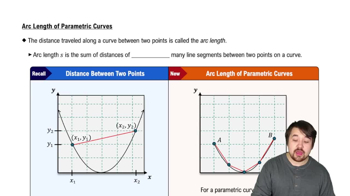Let R be the region bounded by the curve y=√cos x and the x-axis on [0, π/2]. A solid of revolution is obtained by revolving R about the x-axis (see figures).
c. Write an integral for the volume of the solid.
 Verified step by step guidance
Verified step by step guidance Verified video answer for a similar problem:
Verified video answer for a similar problem:



 5:38m
5:38mMaster Introduction to Cross Sections with a bite sized video explanation from Patrick
Start learning